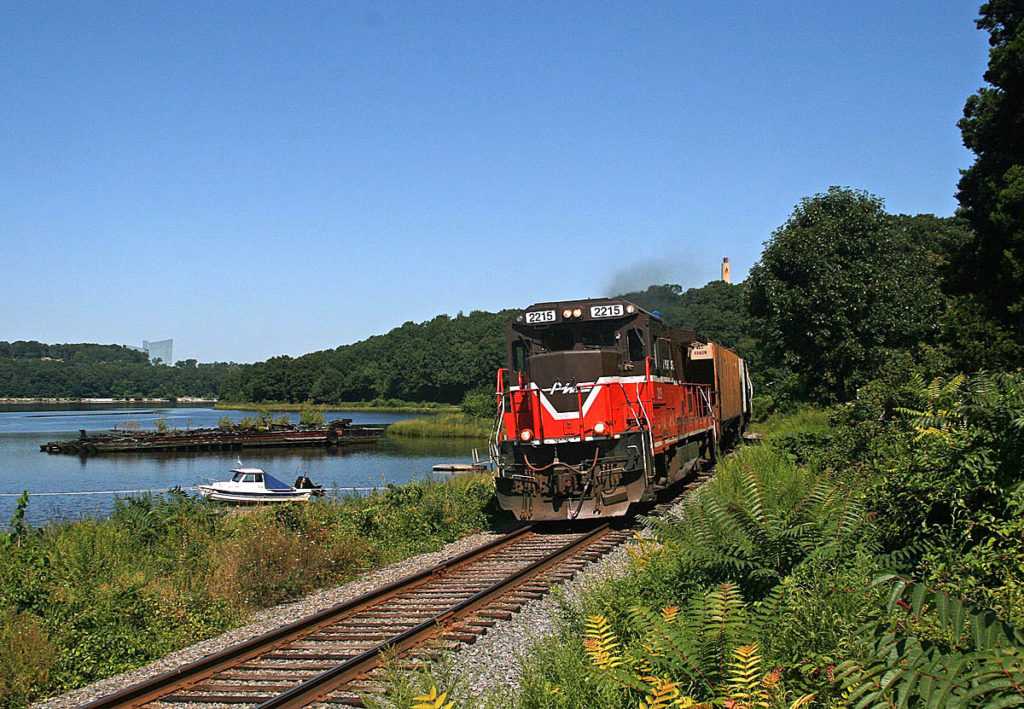
The Providence & Worcester operates in four Northeastern states. Here, train NR3 passes the Thames River in Preston, Conn., on Sept. 1, 2009. Robert A. LaMay Q I was watching a professional golf tournament being played in Cromwell, Conn., just south of Hartford. Who owns the rail line that passes between the 13th hole and […]
Read More…
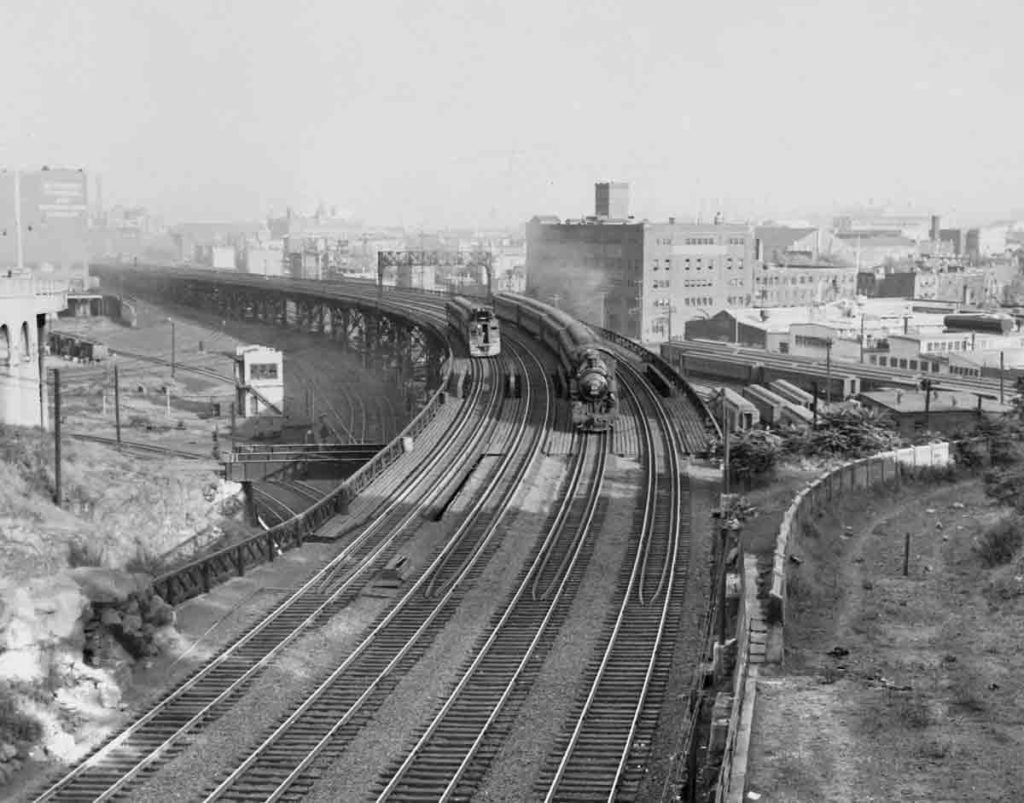
Two Erie trains, a doodlebug with a Stillwell coach and a Pacific with four Stillwells, climb the steel viaduct out of Jersey City before entering the “Bergen Arches.” Erie Railroad During the 1930s as I was growing up, my father worked for the Erie Railroad as a machinist. One of the perks of his railroad […]
Read More…
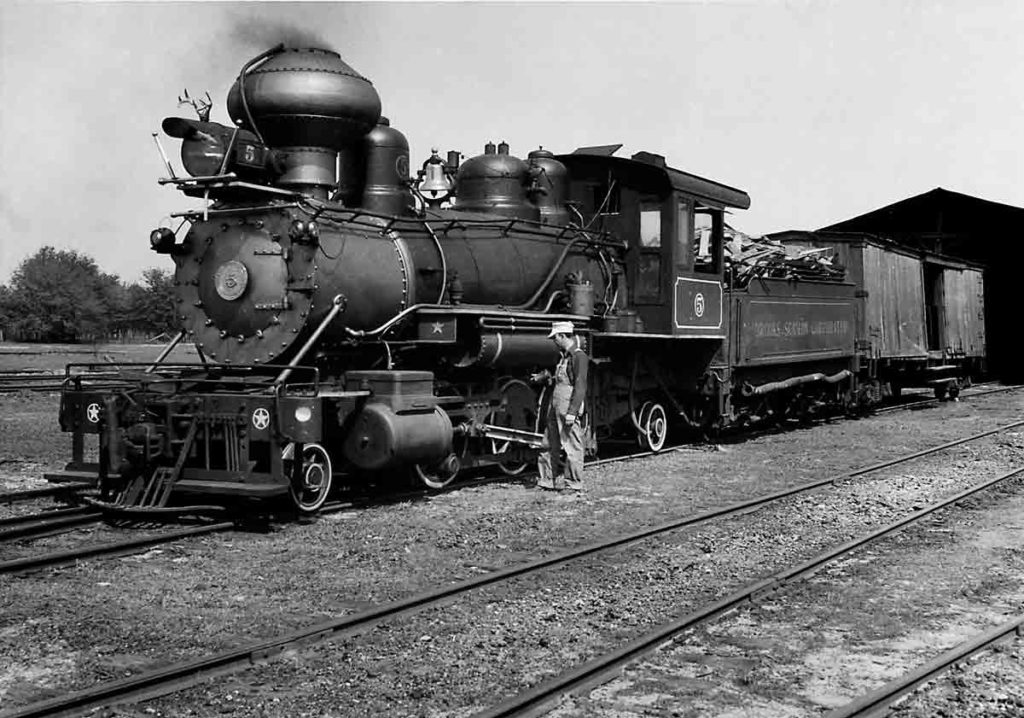
The engineer oils the valve gear of Brooks-Scanlon Corp. No. 5, a cabbage-stacked, wood-burning 2-6-2 that hauled forest products in Florida. Note the antlers and candlesticks adorning the headlight. Frank Clodfelter photo […]
Read More…
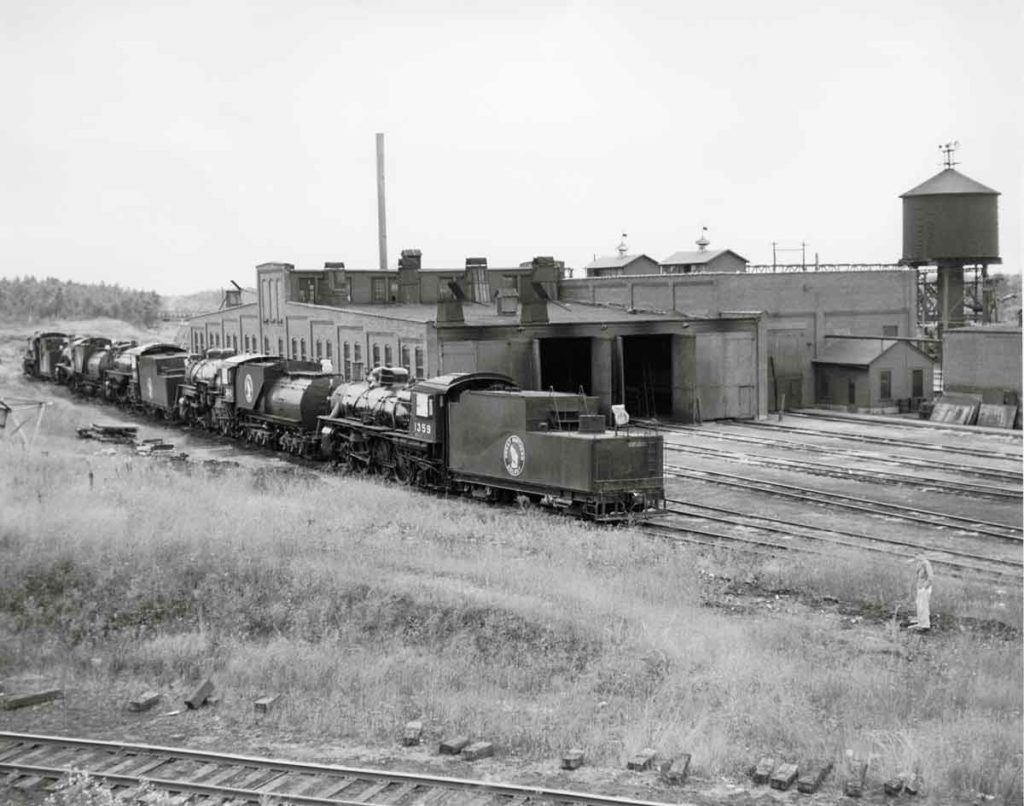
Five “stored serviceable” steam locomotives occupy a track outside the Great Northern roundhouse at Kelly Lake, Minn., the home terminal for GN’s Minnesota iron-ore operations, in September 1954. Philip R. Hastings photo […]
Read More…
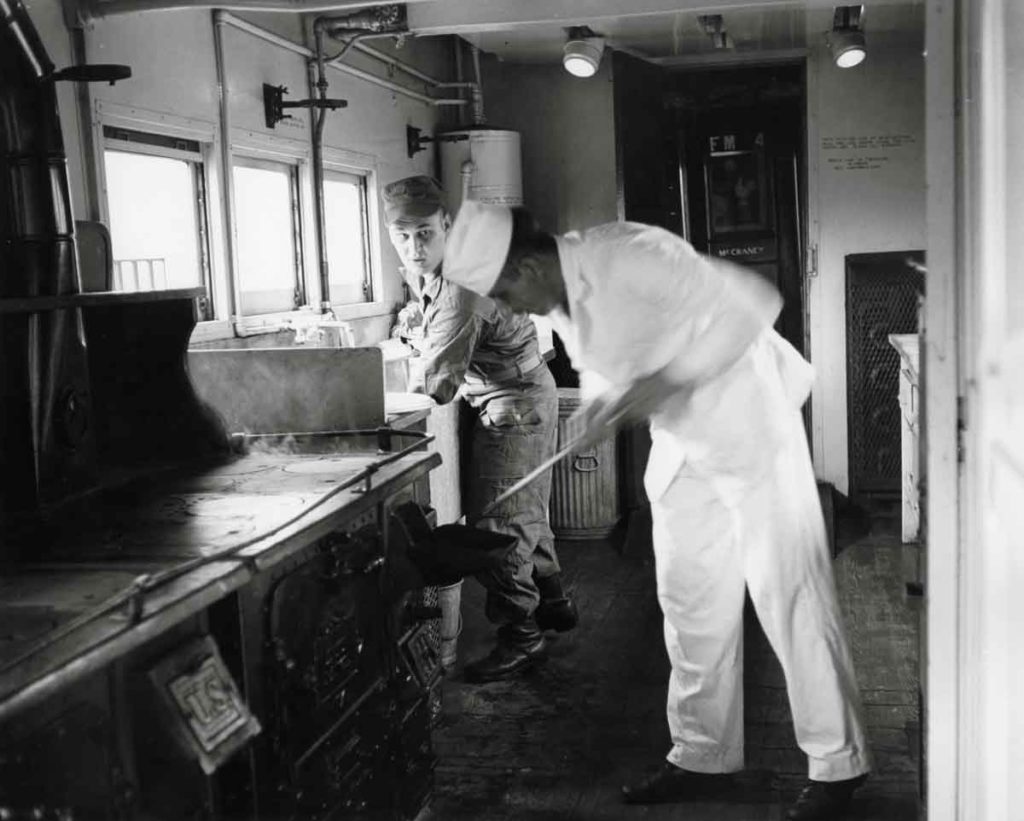
The cook on a Korean War-era troop train out of Fort George G. Meade, Md., stokes the kitchen car’s coal stove as a soldier on KP duty looks on. Philip R. Hastings photo […]
Read More…
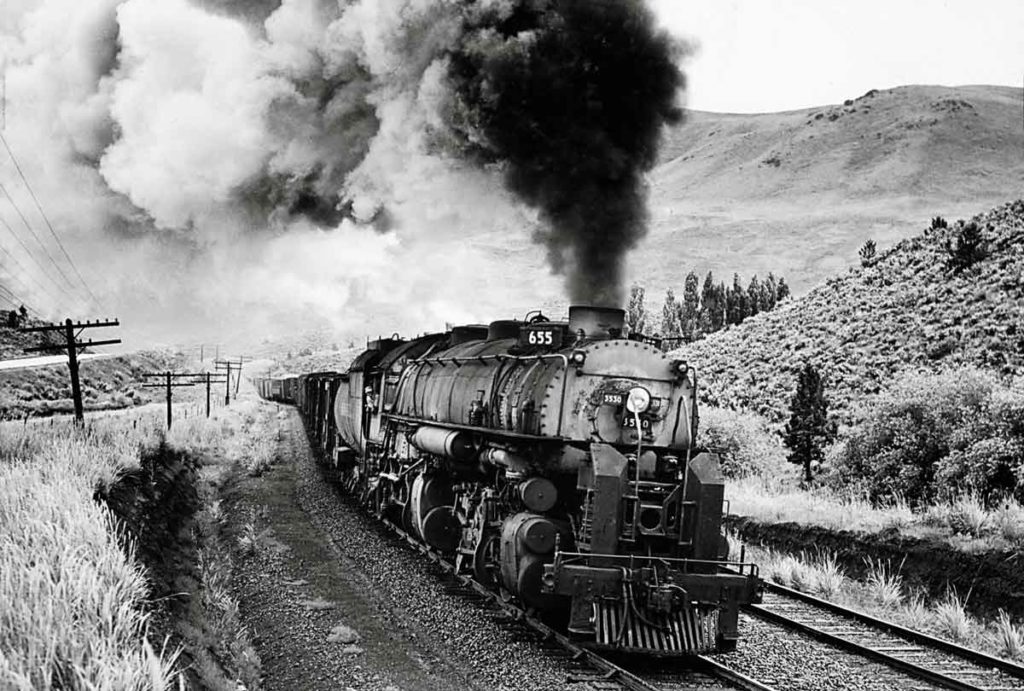
Union Pacific 2-8-8-0 3530 is near Pleasant Valley, Idaho, with time freight 655 in the late 1940s or early ’50s. Sixty-four cars back, another 2-8-8-0 pushes on the rear. Henry R. Griffiths Jr. photo […]
Read More…

In September 1954, New York Central 2-8-2 1305 wades through the weeds on a branch line extending from East Alton to Hillsboro in southwestern Illinois. Philip R. Hastings photo […]
Read More…
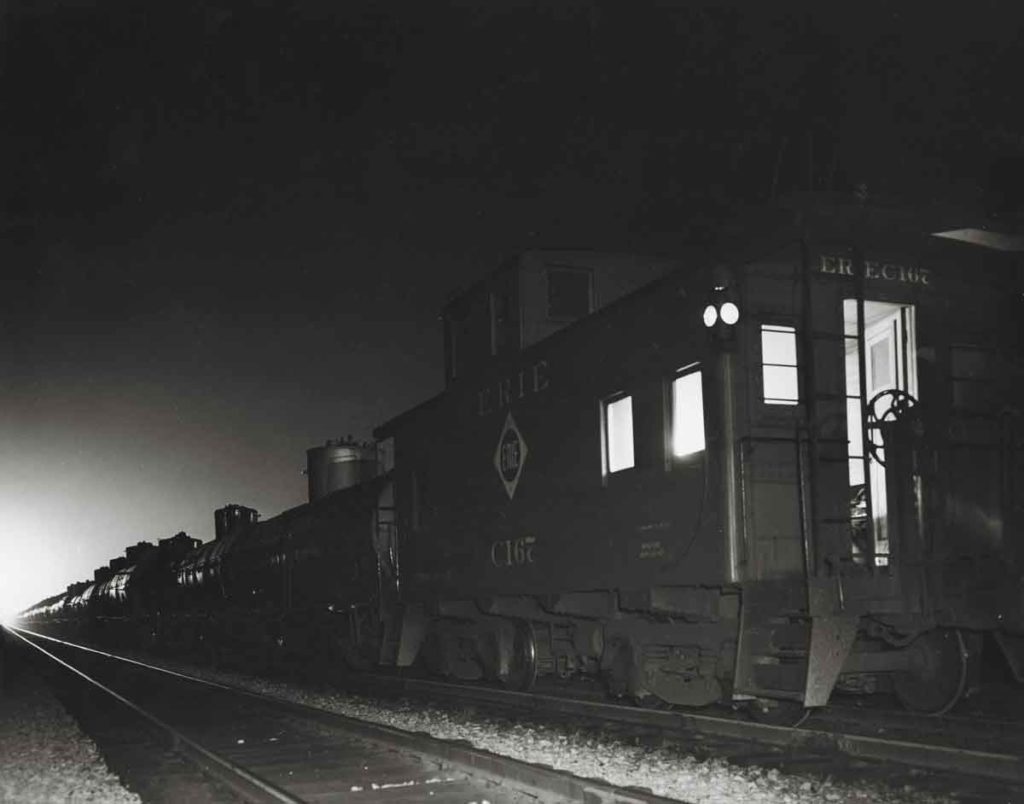
A dramatic nighttime photo shows an oil train on the Erie Railroad during World War II, when German submarines menaced coastal shipping, forcing petroleum from the Gulf Coast onto the rails. Erie photo […]
Read More…
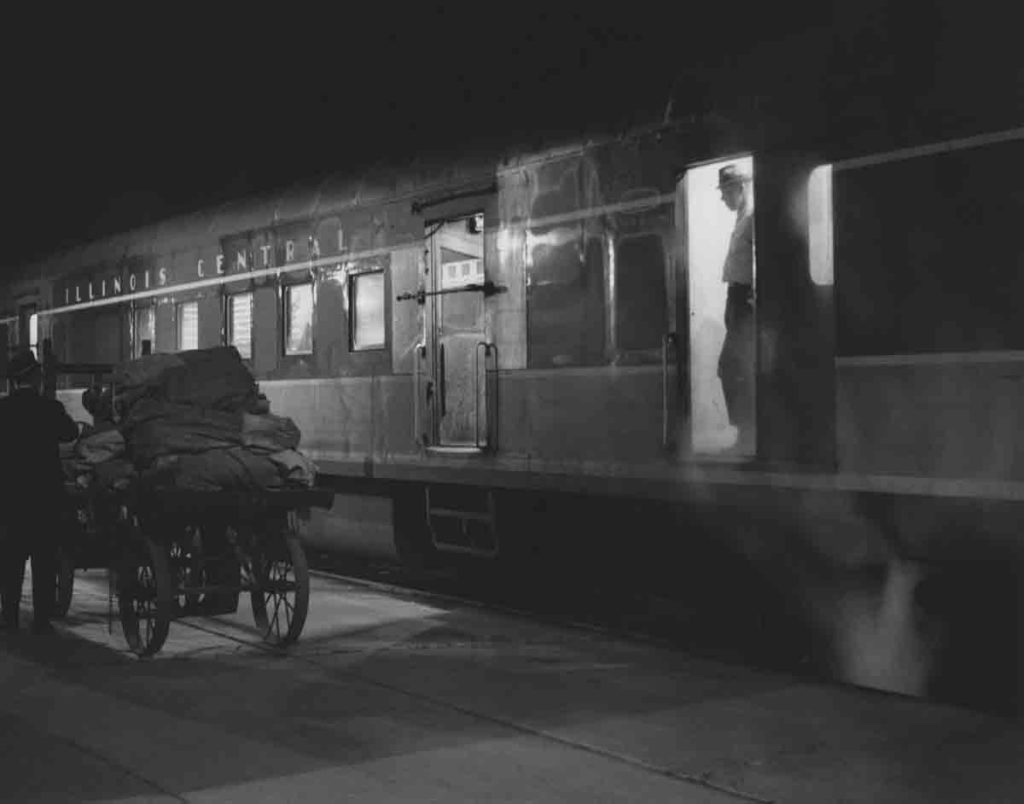
A Railway Post Office clerk looks out from a doorway during a stop at Waterloo, Iowa, in April 1967. The train is Illinois Central’s Sioux City–Chicago Hawkeye. Philip R. Hastings photo […]
Read More…
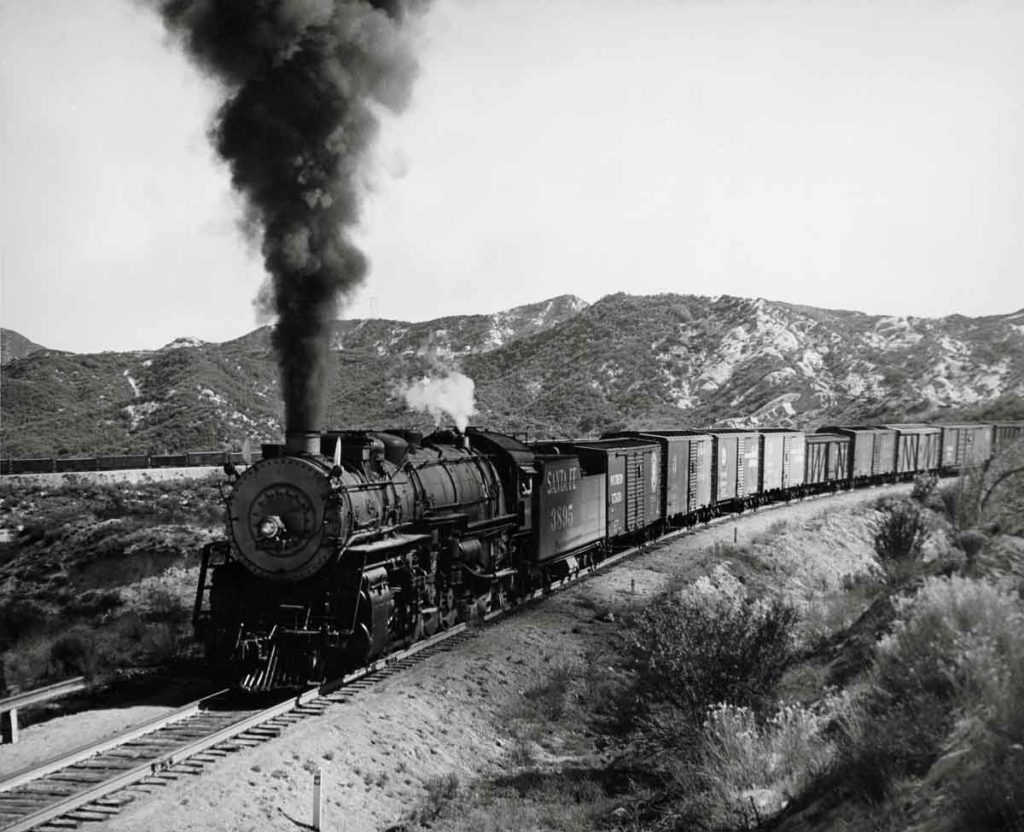
Santa Fe Railway No. 3895, a 2-10-2 Santa Fe type named for the road that originated the wheel arrangement, hauls a freight east up California’s Cajon Pass in 1949. Donald Sims photo […]
Read More…
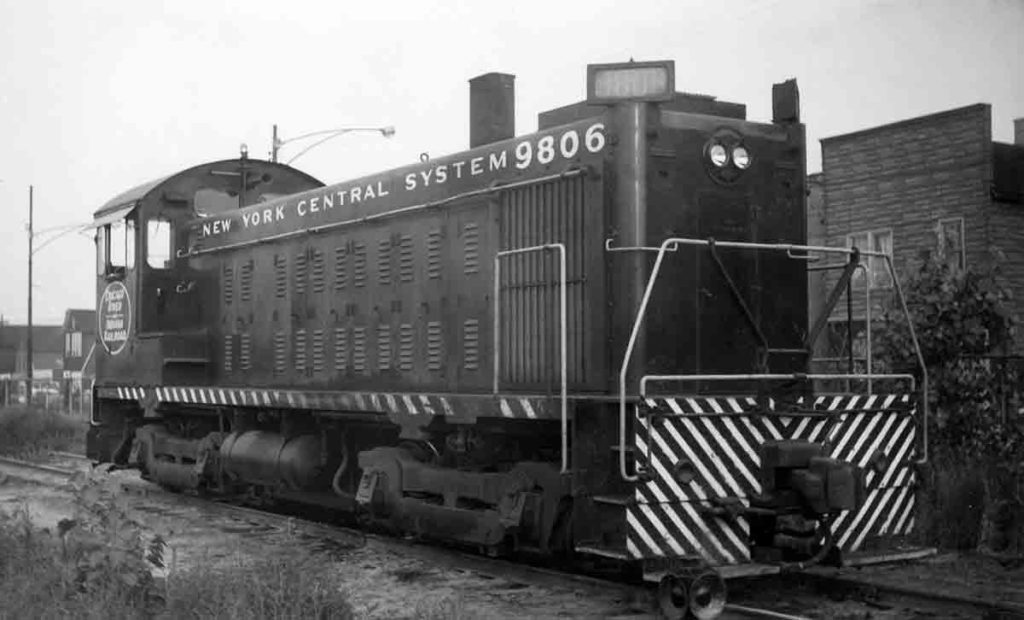
No. 9806 is one of Chicago River & Indiana’s 21 800 h.p. Lima-Hamilton switchers, built in 1951. The little road’s name is in an oval on the cabside, while CR&I parent New York Central System is identified on the hood. Robert A. Janz photo […]
Read More…
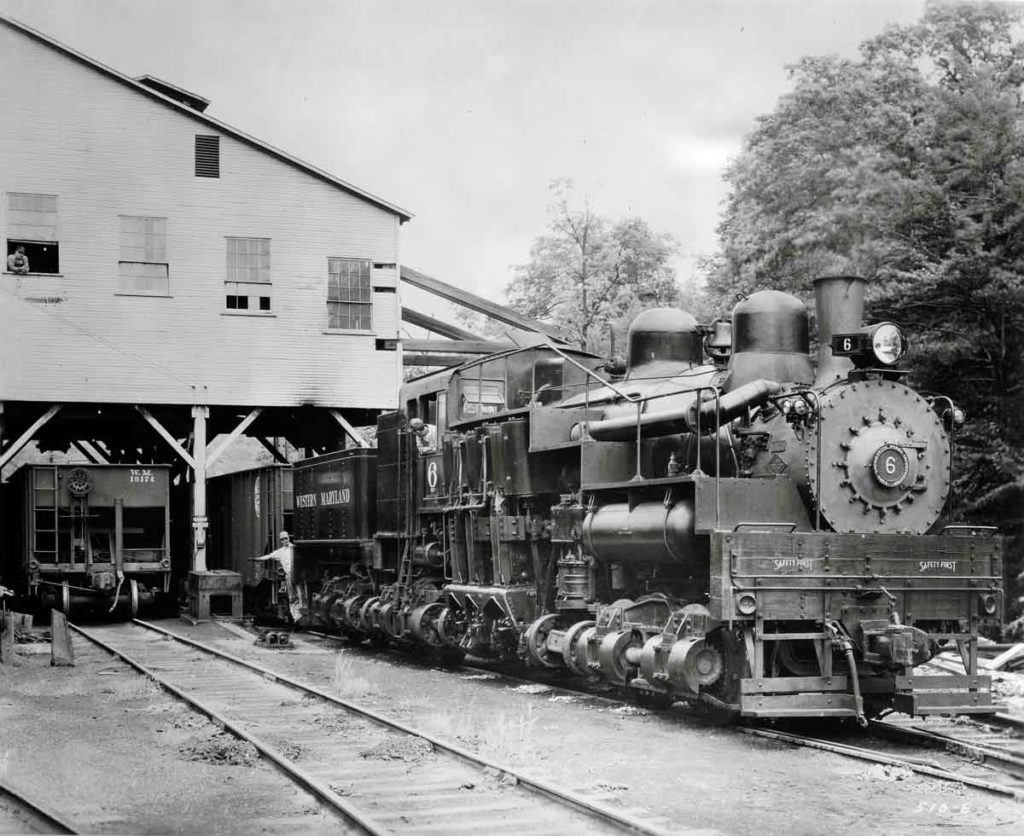
Western Maryland three-truck Shay No. 6 works a coal plant on the Chaffee (W.Va.) Branch not long after delivery in 1945. The 324,000-pound giant was the last of nearly 2,800 Shays built by Lima Locomotive Works. Today she works on the Cass Scenic Railroad. Western Maryland photo […]
Read More…












